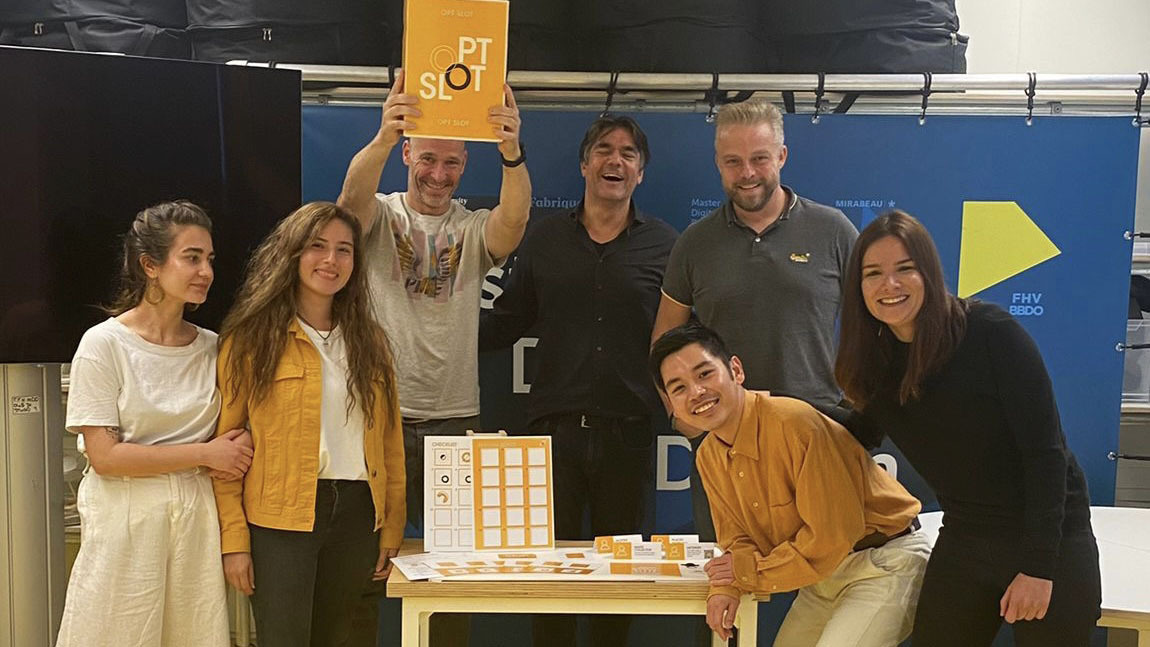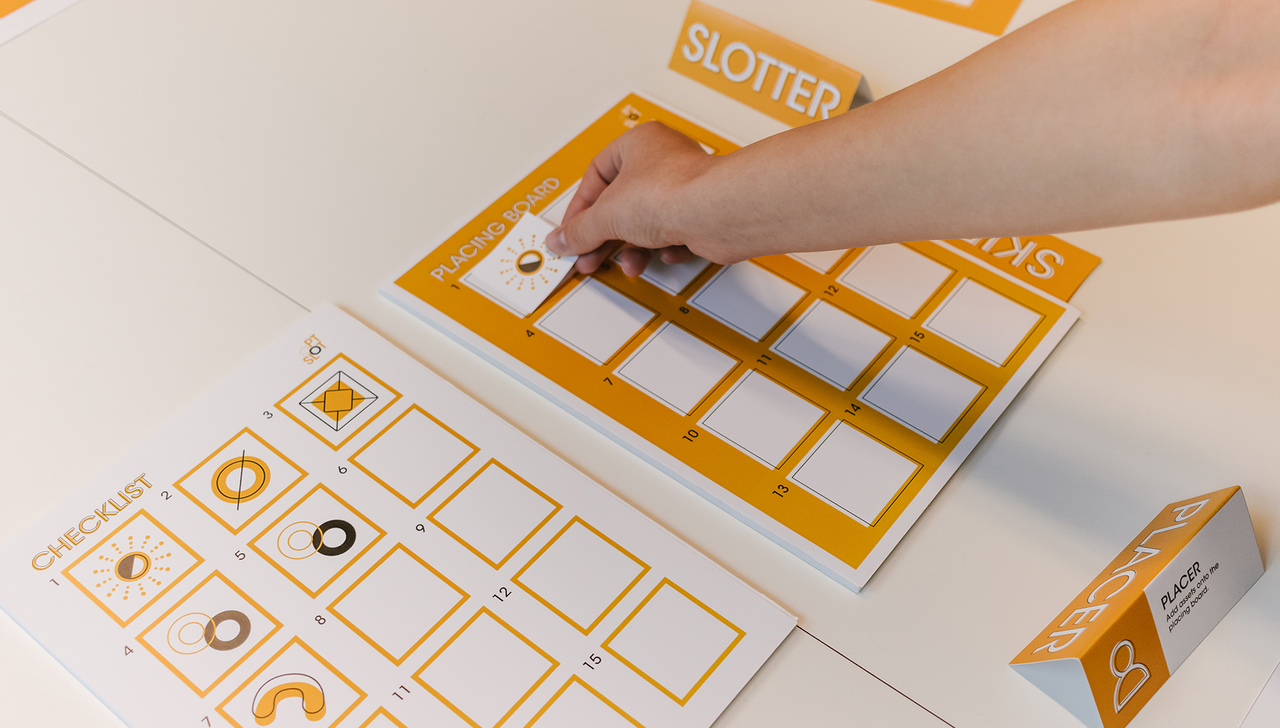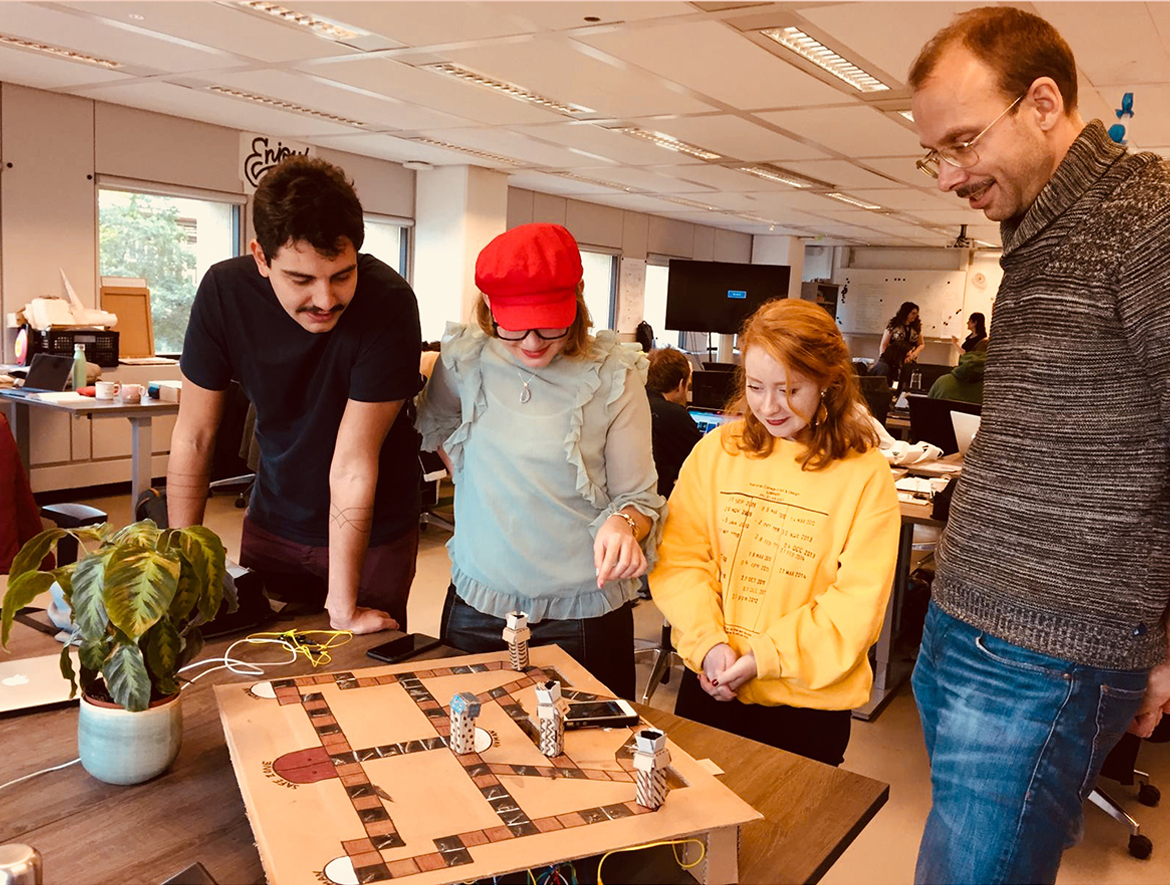
OptSlot
Bridging communication and cooperation through play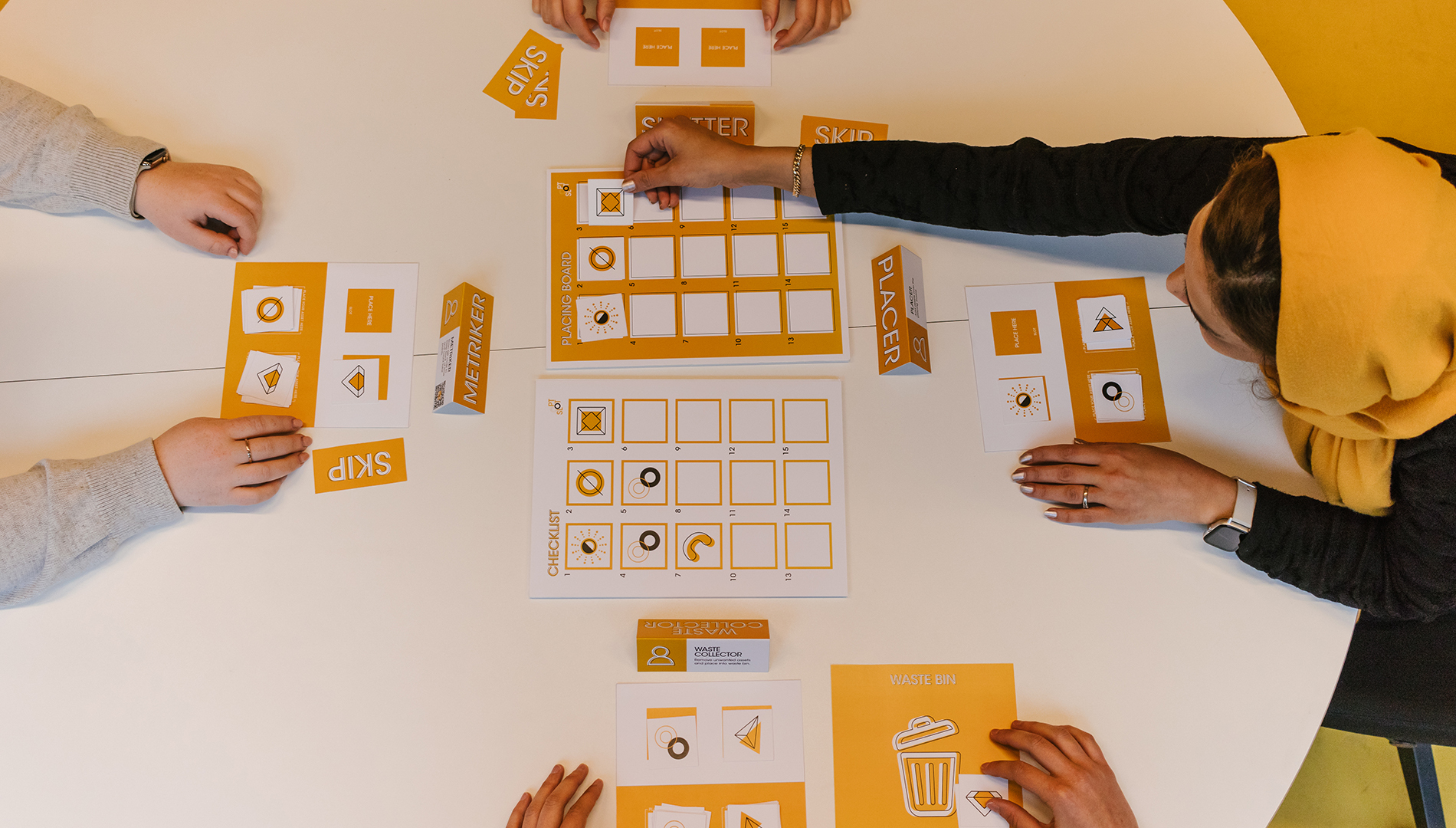
-
Client:
Ijsfontein
- Team:
-
Disciplines:
UX/UI, Visual Design, Game Design
-
Schoolyear:
2021-2022
Developers and Operation Managers in the IT industry work together yet struggle in their communication, which causes disruptions in their workflow. But what if there was a way to help their communication flow smoother and optimize their workflow by bringing them together?
Two IT Consultants approached us to explore the root of the problem between these types of workers and solve it through an analogue game with very limited game mechanics in order to be piloted at an IT event.

What is the root of the problem?
Through interviews, we found there are two completely different personality types. Developers being introverted and operation managers being extroverted. Those personality traits were driving the team into creating an individualist and tensioned workspace.
After better understanding our target audience, we started to explore game design and mechanics. What's a better way to understand games than playing them?
Work hard, play hard
We analyzed and developed mechanics that could fit our problem space, the different personalities, and be able to bring players together. The main game element was collective individualism, players were given specific roles but needed to collaborate towards a common goal in order to be victorious. Another important element was to build up rounds (iterations) in order for players to improve their performance by creating better collective strategies.
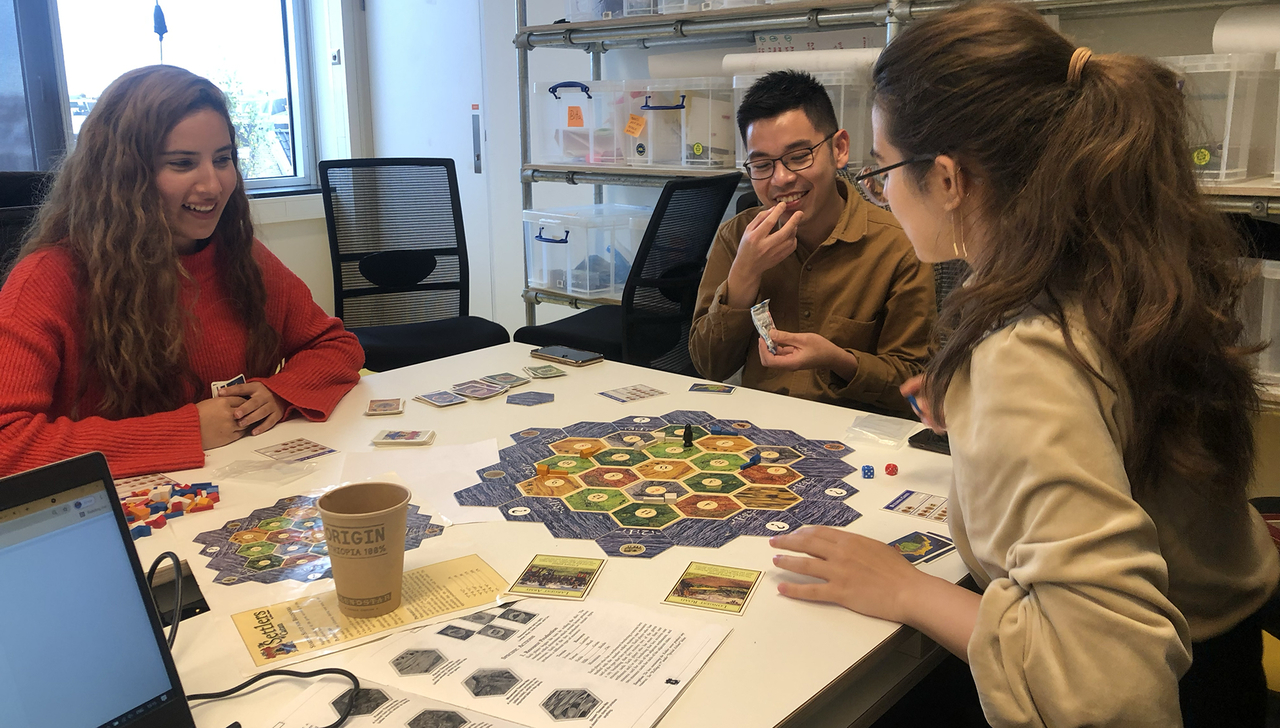
Test, test, test
In order to make sure our solution was working, user testing was conducted throughout the whole process. For every change applied to the game, we tested the impact, both regarding their strategy and emotional commitment. Our goal was to guarantee that the game was challenging enough for the players to have fun, but still simple enough to fit within our time limits and our clients' needs.
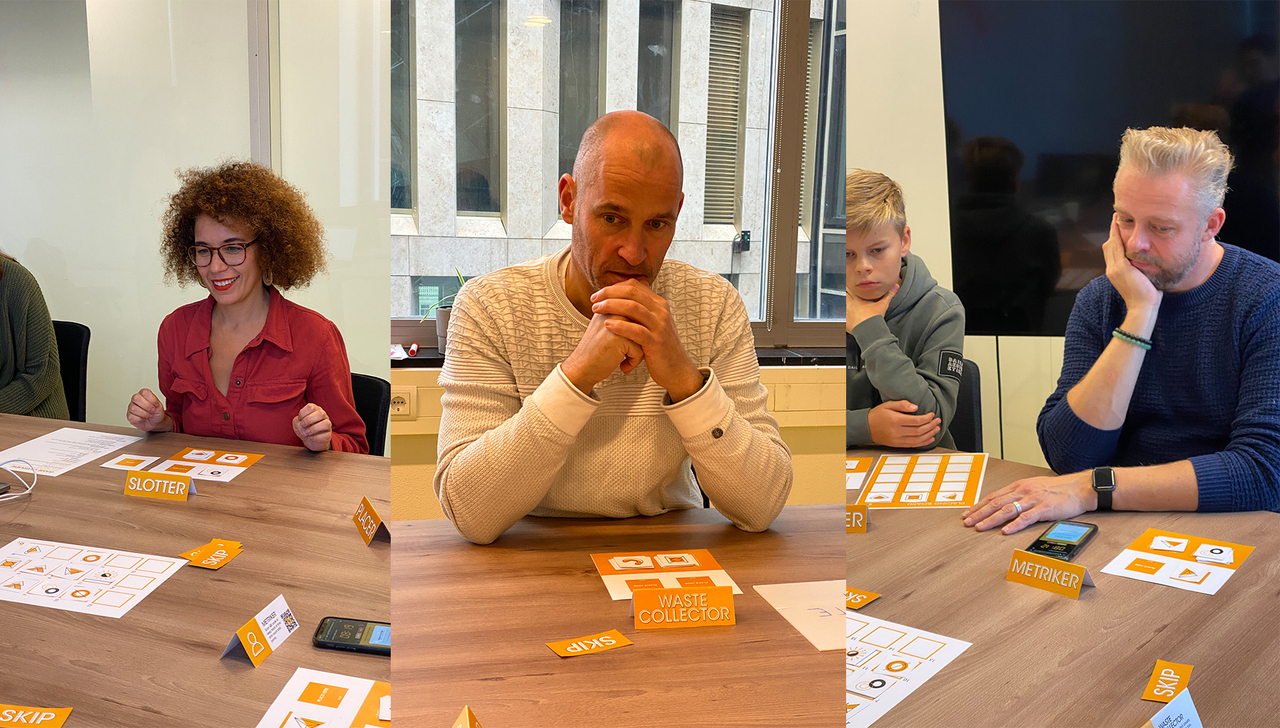
Collective individualism
The result of our process was the conception of Optslot, a game that aims to teach the importance of teamwork. In order to achieve a high score in the game, good communication and strategy is crucial for each team member.
During the game, players are assigned with unique pieces and have to successfully cooperate with their team to recreate a pre-existing list in the form of an assembly belt.
It's quite elegant
The final result of the game was very well received by game experts, who described Opslot as "elegant". In the game industry, an elegant game has the simplest possible mechanics to achieve its goals. The reflection of good design is in the client adoption and integration in the clients’ product portfolio.
